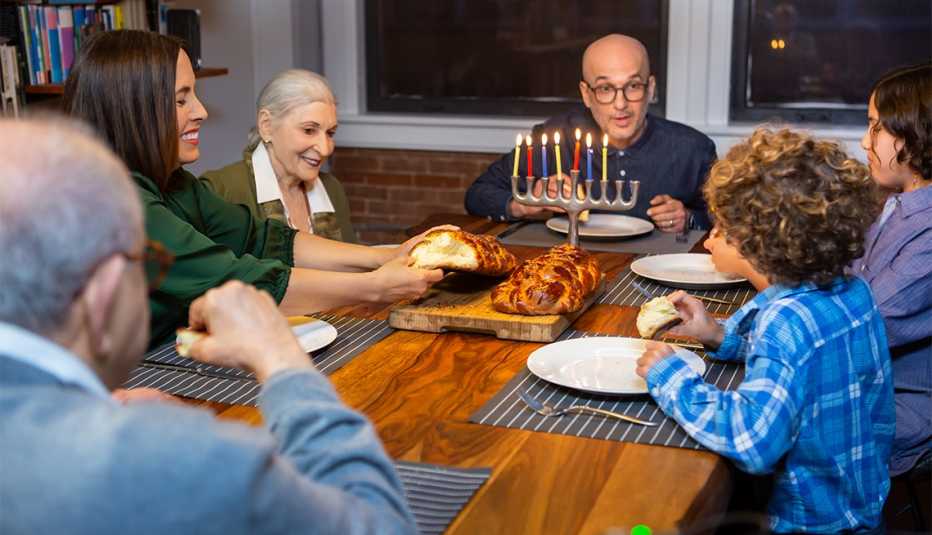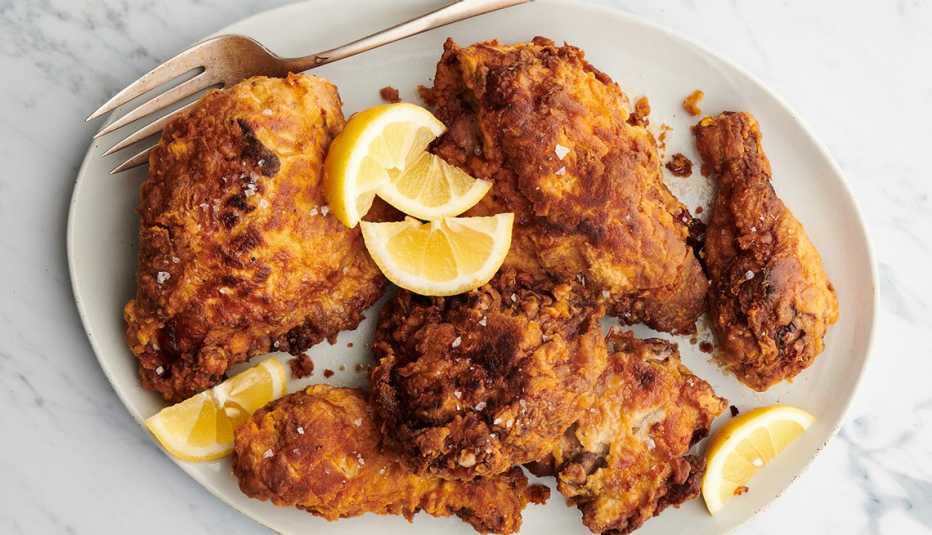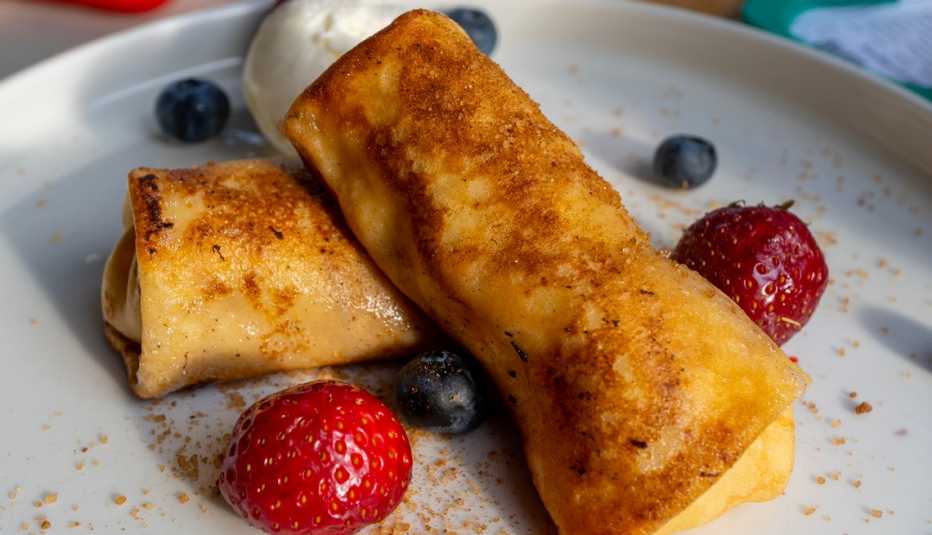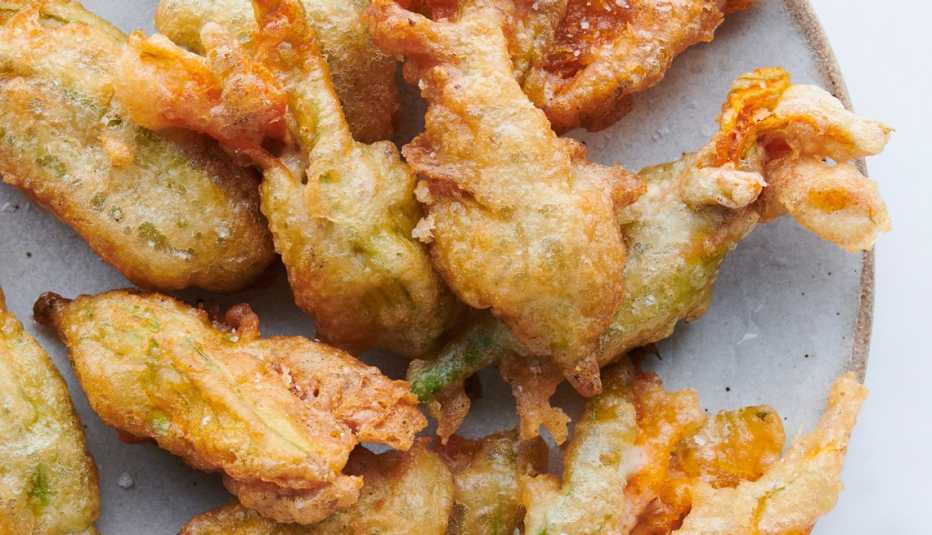Staying Fit


For many American Jews celebrating Hanukkah, the Festival of Lights isn’t complete without the classic latke, a fried potato pancake.
But in many other countries, Jews have drawn on the local culture for the Hanukkah menu, so the celebratory meal includes a variety of foods that aren’t as common on the U.S. table. Oil, however, always plays a starring role.


AARP Membership— $12 for your first year when you sign up for Automatic Renewal
Get instant access to members-only products and hundreds of discounts, a free second membership, and a subscription to AARP the Magazine.
Hanukkah is the eight-day celebration commemorating the recovery of Jerusalem and the rededication of the Second Temple in the second century B.C. As the story goes, there was only consecrated oil enough for one day, yet it lasted eight, and so Jews celebrate this miracle, in part by consuming foods cooked in oil.
“I love that we’re encouraged to eat comfort foods and gather together,” says Shannon Sarna, editor of The Nosher and author of Modern Jewish Comfort Food. “There’s deliciousness and candlelight, something positive when it’s dark and cold outside. Once or twice a year, isn’t it great to indulge and enjoy the tradition?”
Here are eight Hanukkah foods from cultures around the world:


1. Fried chicken
We might think of this dish as American picnic fare, but in Italy, particularly in Tuscany, fried chicken is on the Hanukkah menu, says Benedetta Jasmine Guetta, author of Cooking alla Giuddia: A Celebration of the Jewish Food of Italy. “It’s simple and easy to make,” says Guetta, who grew up in Milan. Before frying, the chicken marinates in olive oil, lemon juice, water, garlic and salt. “The traditional way to make it is to start with a whole chicken, carve it, and then fry the pieces bone in and skin on, but working with chicken parts simplifies the process.” Guetta says many Italian Jews will pair fried chicken with risotto with raisins.








































































More From AARP
Holiday Food Traditions: Test Your Knowledge
How well do you know culinary traditions and customs?
Quiz: U.S. Holiday Celebrations
Match the location to the event and learn more about these festive traditions across the countryExciting Holiday Desserts That Go Beyond the Expected
As friends and family gather, it's the perfect time to try something new